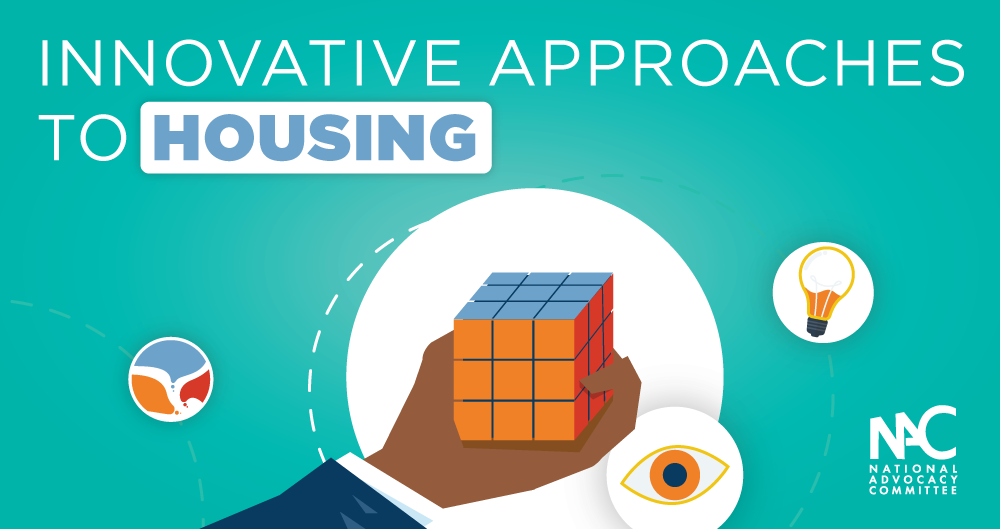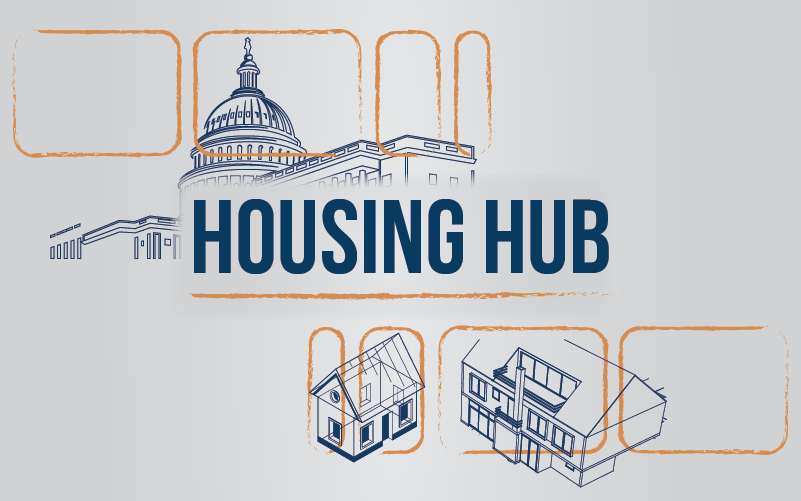Innovative Approaches to Housing
Celebrating NAHREP familia, cultura, politics, and grassroots action
August 11, 2022
Qué onda mi gente?!
Cómo están, corazones? This past weekend, I attended one of my favorite gatherings for national housing leaders. Annually, a group of top housing executives and nonprofit leaders gather in La Jolla to discuss the housing market and to share ideas. I was inspired by many innovative approaches to housing issues and I want to share some of what I heard.
The goal of the National Advocacy Committee is to empower each of you to be leaders and advocates within your community. As you speak to more city stakeholders and nonprofit leaders, it is important to share these ideas so your city can explore new options. They are likely to look to people like you for ideas on programs and innovations that solve our housing crisis, homeownership gap, and institutional investor trends.

Deepblocks is a technology platform that identifies properties with developmental potential based on zoning parameters and market data. It uses artificial intelligence software to sift through zoning data, including allowable land use, max units, height limits, floor limits, lot coverage, setbacks, and parking requirements. Through geo-mapping, the software layers this data with demographics, opportunity zones, and market rates to identify the best areas to build and what to build where.
I love this product! If used effectively by cities and developers, I truly believe it will be a gamechanger for housing supply. It is this level of information and data that must be leveraged in order to ensure housing production meets demand. I’ve seen the demo. As someone who is deeply passionate about urban planning, housing supply and data, I geeked out when I saw it. Some of you may have already seen Deepblock’s Founder and CEO, Olivia Ramos, speak at NAHREP events. Deepblocks is also one of the Latino-led companies that L’ATTITUDE Ventures has invested in, so we will be seeing more of them in the future.
The DASH program is operated by the National Community Stabilization Trust, the organization FHA Commissioner Julia Gordon used to head. The program provides a flexible and well-priced loan to small entrepreneurs who buy, renovate, and re-sell single-family homes to owner-occupants in neighborhoods that have historically suffered from disinvestment. Currently, they’re doing a pilot with the city of Baltimore’s Department of Housing and Community Development and the Neighborhood Impact Investment Fund. This is a program idea that could be pitched to cities or organizations as part of your advocacy.
City Partnerships with Homeowners Associations (HOA)
A handful of neighborhoods around the country have started to create and partner with HOAs in order to compete with investors purchasing homes in certain neighborhoods. For example, in Fishers, Indiana, Mayor Scott Fadness has hosted town halls to support HOA leaders and residents with information and resources on actions they can take to regulate investor purchases of single-family homes in their neighborhood. The city grew concerned when housing data showed that between 2016 and 2021, home price appreciation increased by 26 percent, and nearly 1,000 homes in their small city are owned by investors, many of whom are out-of-state. The mayor says there is a precedent for HOAs to restrict the number of rentals in their community and HOAs will be able to move more quickly than state or local governments to get homes back in the hands of families. What are your thoughts on this?
I had the pleasure of getting to know the Co-Founder and CEO of Nestment, Niles Lichenstein, at the event. Living in the Bay Area in Berkeley, California, he was taken aback by how out-of-reach millennials saw homeownership. Thinking about the skyrocketing prices in the Bay Area, I get where he’s coming from! So, he founded Nestment, which creates a co-ownership model of second homes. The concept is simple – a group of friends (or relatives) can pool money together for a down payment and split expenses to purchase a property together. They could then use this property as a rental, vacation home, or even live in it. It allows renters to start building wealth through homeownership, even if they can’t afford to buy on their own. In theory, they can later use the equity and wealth built through this investment to purchase a primary residence down the line. I thought this tool was really interesting, particularly given the prevalence of multi-generational living and sharing of resources that occurs among Latino homebuyers.
Laura Brunner, who heads up the “The Port,” is fantastic and her energy is contagious. The Port was established by City of Cincinnati and Hamilton County in 2000 with the purpose of promoting economic development in the Cincinnati metro area. It is doing some really cool things to compete with institutional investors and provide more housing stock for first-time homebuyers. The Port has been purchasing and rehabbing homes throughout Hamilton County to provide lower-cost options for homebuyers. It purchases vacant and blighted homes, rehabs the properties, and sells the properties at cost.
I hope you found these innovative approaches to housing underproduction as interesting as I did! I’m curious to know what you all think. Don’t forget to share these ideas within your communities. Together we can make a difference.

About Noerena Limón
Noerena Limón is NAHREP’s Executive Vice President of Public Policy and Industry Relations. Noerena heads the organization’s policy and advocacy efforts on issues ranging from homeownership, housing inventory, credit access and immigration.
Prior to joining NAHREP, Noerena spent six years at the Consumer Financial Protection Bureau (CFPB) and served as a political appointee under President Obama in the White House Office of Political Affairs.



